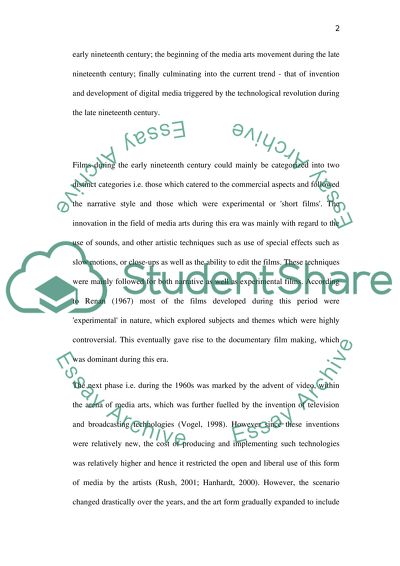Cite this document
(“Development of Media Art Dissertation Example | Topics and Well Written Essays - 2000 words”, n.d.)
Retrieved from https://studentshare.org/visual-arts-film-studies/1430497-the-development-of-media-art
Retrieved from https://studentshare.org/visual-arts-film-studies/1430497-the-development-of-media-art
(Development of Media Art Dissertation Example | Topics and Well Written Essays - 2000 Words)
https://studentshare.org/visual-arts-film-studies/1430497-the-development-of-media-art.
https://studentshare.org/visual-arts-film-studies/1430497-the-development-of-media-art.
“Development of Media Art Dissertation Example | Topics and Well Written Essays - 2000 Words”, n.d. https://studentshare.org/visual-arts-film-studies/1430497-the-development-of-media-art.


